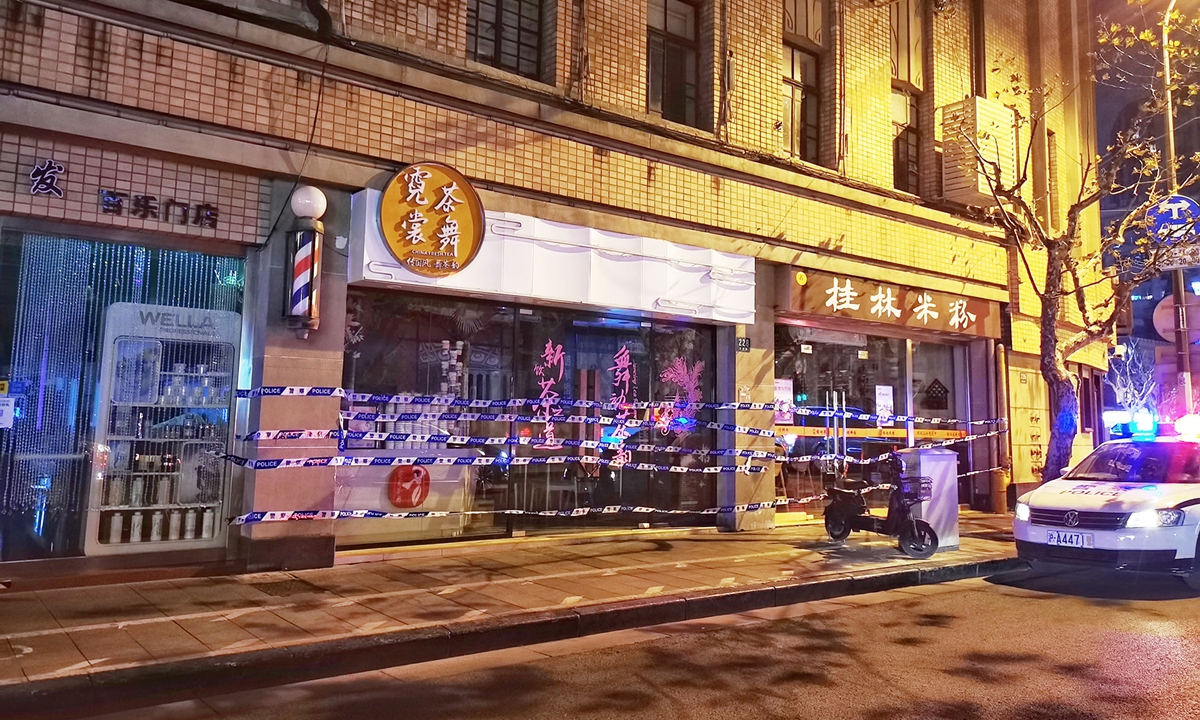
Photo: CFP
A 20-square-meter milk tea shop in downtown Shanghai was upgraded to a medium-risk area on Thursday, which once again won Chinese netizens' applause over China's precise and targeted containment measures against COVID-19, and also a refute toward Western media's blaming of China's "lockdown" policies.
The Global Times found on Friday morning that the milk tea store and its neighboring rice noodle stall were cordoned off. A hair salon and a China Mobile store on the same road appeared to be operating normally.
"It's well said that Shanghai's COVID-19 prevention and control measures are like catching a mouse in a china shop," a woman whose office is close to the milk tea store told the Global Times on Friday.
The hashtag "Shanghai's milk tea shop has become the world's smallest medium-risk region for COVID-19" has gained over 48 million clicks on Chinese-twitter like Sina Weibo. The shop where the confirmed patients worked was raised to medium-risk level for COVID-19 on Thursday, after five cases tested positive for the virus.
The Shanghai Health Commission explained the reason why they classified the shop as a medium-risk area, saying that the five cases reported on Thursday were on the same transmission chain as the imported silent carrier reported on Tuesday. Meanwhile, as of Friday, a total of 54,741 people related to the confirmed cases tested negative for nucleic acid tests, which means the risk is basically under control.
Western media has never stopped blaming and defaming China's "lockdown" policies. An AP story published on Tuesday claimed that the country's policies disrupt people's lives and emergency medical treatment for some.
In fact, precise and targeted containment against COVID-19 has never been a slogan, and good examples can be found in many cities such as Omicron-hit city Tianjin. Along with quick and early epidemiological investigation, massive screenings, local authorities are trying their best to maintain the stable and normal functioning of society, including ensuring medical treatment and providing sufficient daily supplies to residents.
On January 9, a building in a residential community in Tianjin rather than a whole community was classified as a high-risk area for COVID-19.
Precise measures were taken to detect the epidemic in the first place. "Epidemiological investigations and big data were used to track all close and secondary contacts; apart from the strong nucleic acid detection capability, the cooperation of ordinary people is another advantage of traditional Chinese culture," Lu Hongzhou, head of the Third People's Hospital of Shenzhen and member of the expert committee of national disease control and prevention, told the Global Times on Friday.
The overall incidence curve of the wave of epidemic in Tianjin mainly focused on January 8, 9 and 10, the first three days of the outbreak, which has the highest incidence. Zhang Ying, deputy director of the Center for Disease Control and Prevention of Tianjin said at a press briefing that it's not common for the epidemic to enter into a peak phase during the early stage, in fact it indicates that Tianjin's screening and control measures were conducted very quickly and early.
Since Thursday night, some residents in Shanghai have refunded their tickets for travel and some went to take nucleic acid tests. Most residents showed their understanding toward the preventive measures conducted in Shanghai, despite some complaining about their disagreement with regulation violators who didn't follow the quarantine rules and caused risks to other people.
"This is the positive effect of targeted and scientific epidemic prevention for the long term to minimize the impact on residents' lives," one netizen wrote. "Cautious, calmness, and confidence lie behind the 'smallest medium-risk area'".
It reflects the country's precise and flexible prevention and control of the epidemic, another netizen wrote, noting that it is the greatest warmth that preventive measures will not impact the lives of residents.
Global Times




